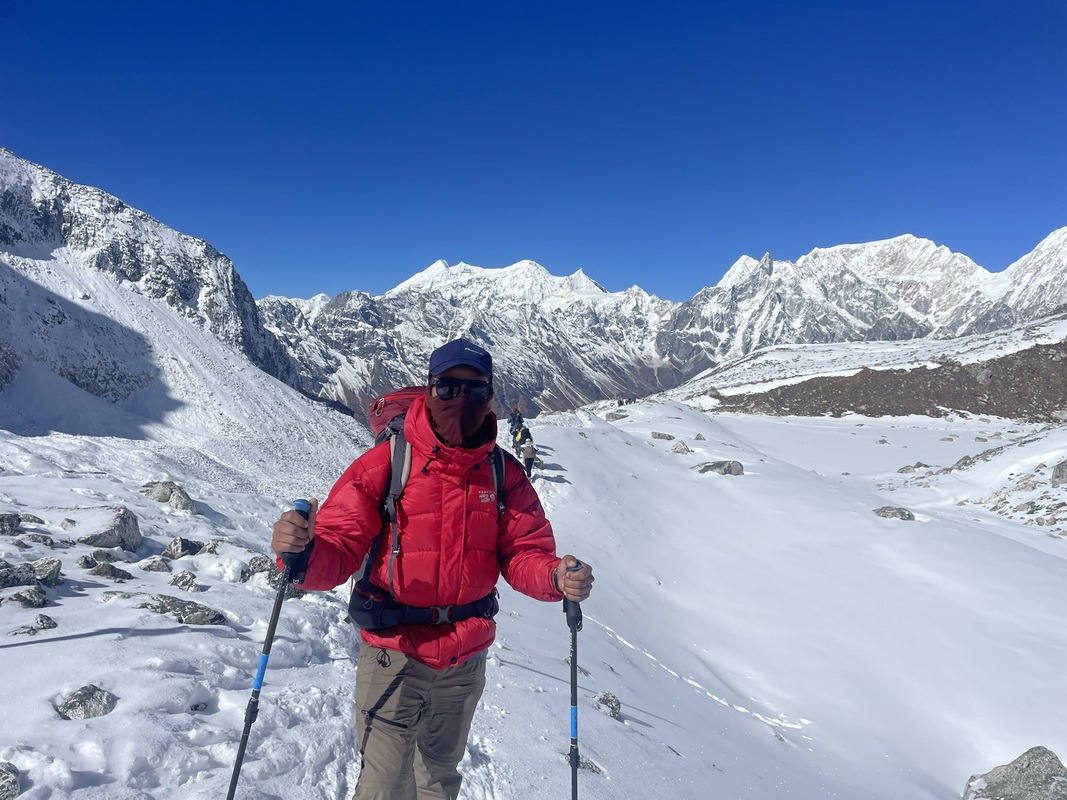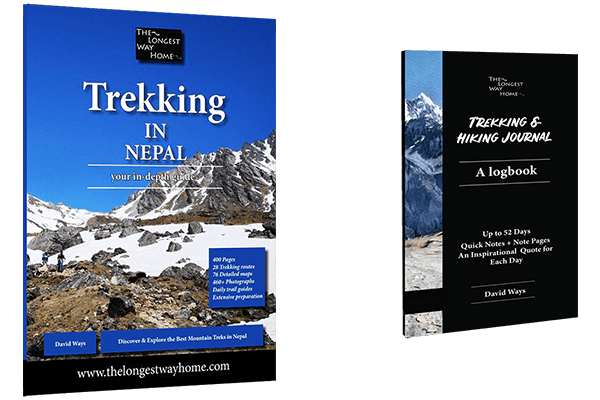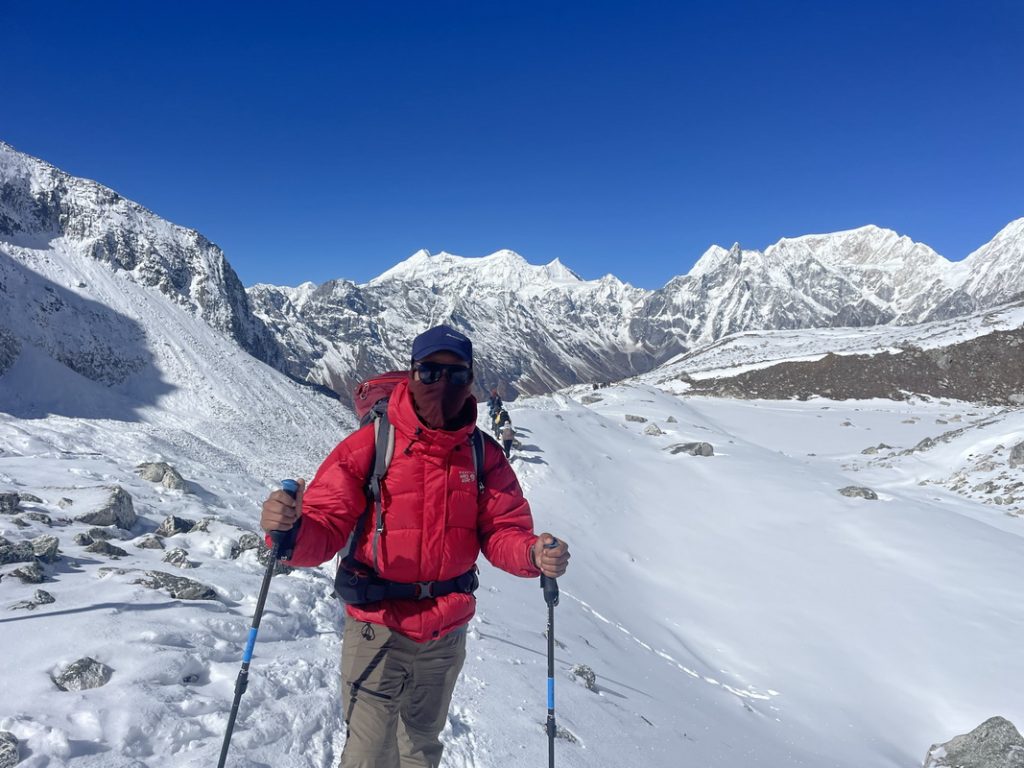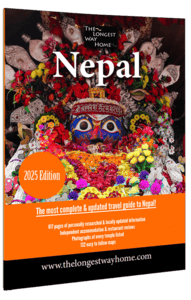

Compulsory vs. Mandatory Guidelines for a Safe and Enjoyable Trek
Nepal’s breathtaking mountains and diverse landscapes have long captivated adventurous travelers worldwide. However, navigating the country’s ever-evolving trekking regulations can be a daunting task, particularly when it comes to understanding the distinction between compulsory and mandatory trekking guides. Nepal Tourism Board (NTB) and Trekking Agencies Association of Nepal (TAAN) made this even more difficult last year when they banned solo trekking in Nepal.
Let’s clear up some of the confusion.
Solo Trekking Ban in 2024: Still in Effect?
Yes, despite the lack of checkpoints, the mandatory trekking guide requirement remains in effect. NTB and TAAN continue to enforce the rule that every trekker in Nepal must have a guide, regardless of the trek.

However, it’s important to note that this requirement has been met with widespread resistance, particularly in the Solukhumbu region, where the mandatory guide mandate has been outright rejected. Additionally, trekking agents are increasingly questioning the need for TIMS cards, which have not been fully implemented across all trekking routes.
Furthermore, both TAAN and NTB are embroiled in their own battle over where the TIMS card fees are going.
Other administrative regions are also mulling the idea or ditching TIMS cards for their own checkpoints. A case in point is the Mardi Himal trek which late last year introduced a 500 rupee regional permit. That’s in addition to the National Park Fee, and the TIMS card. This has been met with hostility from local teahouse owners. Just this week the regional permit office was ransacked and closed down.
Mandatory vs. Compulsory: Discerning the Differences
The terms “compulsory” and “mandatory” are often used interchangeably, but there’s a subtle difference between them. Compulsory guides are required for all treks in restricted areas, such as Upper Mustang, Manaslu, and Tsum Valley. These guides are required by the Department of Immigration and play a crucial role in ensuring the safety and well-being of trekkers in these sensitive regions.
On the other hand, mandatory trekking guides are required for all treks that require a TIMS card, which stands for Trekkers Information Management System. TIMS cards are issued by the Nepal Tourism Board (NTB) for trekking in certain areas of the country. The mandatory guide mandate was implemented in March 2023 with the intention of enhancing trekker safety. However, the effectiveness of this requirement has been questioned due to the lack of checkpoints and the absence of robust safety measures implemented by NTB and Trekking Agencies Association of Nepal (TAAN).
Going forward, I will be using this terminology for all my trekking guides and trekking guidebooks.
Defining Compulsory and Mandatory Trekking Guides in Nepal:
- Compulsory Trekking Guide: This type of guide is required for all treks in restricted areas such as Upper Mustang, Manaslu, and Tsum Valley. These guides are mandated by the Department of Immigration and must be licensed by the government. Trekkers found without a compulsory guide in restricted areas face severe penalties, including fines, imprisonment, or deportation.
- Mandatory Trekking Guide: This type of guide is required for all treks that require TIMS cards, which are permits issued by NTB for trekking in certain areas of Nepal. The mandatory trekking guide mandate was implemented in March 2023 and is meant to enhance the safety of trekkers. However, as mentioned earlier, the effectiveness of this requirement has been questioned due to the lack of checkpoints and the lack of safety measures implemented by NTB and TAAN.

Solukhumbu: An Exception to the Rule
The Solukhumbu region, home to Mount Everest, has defied the mandatory guide mandate, giving trekkers the choice of opting for a guide or venturing independently. This resistance from the local community stems from concerns about the financial burden imposed by the guide requirement and the lack of discernible improvements in safety measures.
In the Solukhumbu region you can trek without a guide to Everest Base Camp, Gokyo Ri, and the Three Passes. You just need a TREK CARD (independent trekkers) or Regional Permit (for groups) which can be purchased in Lukla or Monjo. Pricing for everything is available in both my Nepal Guidebook, and Trekking in Nepal Guidebook.

Short Treks: A Different Set of Rules
While mandatory trekking guides are required for most treks in Nepal, there are exceptions. Short treks like Panchase, and Mohare Danda do not fall under this category, and trekkers are free to explore these routes without a guide. This applies to all treks where TIMS cards are not needed. An exception to this is the Shivapuri trek where the local office insist that one of their mandatory trekking guides are needed.

Is the Mandatory Guide Ban Likely to Change Soon?
The future of the mandatory trekking guide requirement is uncertain. NTB and TAAN are facing mounting pressure from trekking agents, trekkers, and local communities to reconsider the policy. Additionally, NTB has come under scrutiny in recent months for their part in promoting Nepal.
Recommendations for Trekkers
Given the ever-changing regulations, it’s crucial for trekkers to stay informed about the latest requirements before planning their Nepal adventure. I’ll be publishing any changes to to the treks corresponding guide right here. Likewise all my digital guidebooks will be updated the moment a change to a trek occurs. Additionally, it’s recommended to book your trek with a reputable agency that can provide up-to-date information and guidance. There’s a list of these trekking agents in my Trekking in Nepal Guidebook, or if you prefer I can get you recommended guide though my Find a Trekking Guide Service.
Unlock the ultimate adventure with my Guidebooks to Nepal!
Elevate your trekking experience with the most comprehensive guidebook dedicated to Trekking in Nepal. Discover 28 full treks spanning over 400 pages, providing unparalleled insights. What sets it apart? It’s the only guidebook globally featuring trekking links, guiding you on seamlessly connecting treks! Whether you prefer an instant download or the paperback edition shipped worldwide, this guidebook is your passport to unmatched exploration.
Ready to embark on a journey beyond the ordinary?

? Get the Digital Trekking in Nepal guidebook!
? Grab the Paperback Trekking in Nepal Guidebook!
? Explore the Paperback Trekking & Hiking Journal!
If you’re seeking a holistic guide covering the entire country or focusing on the most popular treks, dive into my full Nepal Guidebook. It stands as the world’s sole guidebook incorporating entry prices for every attraction, comprehensive maps, and, of course, the finest information.
Discover why this book surpasses all others: Find out more here!

